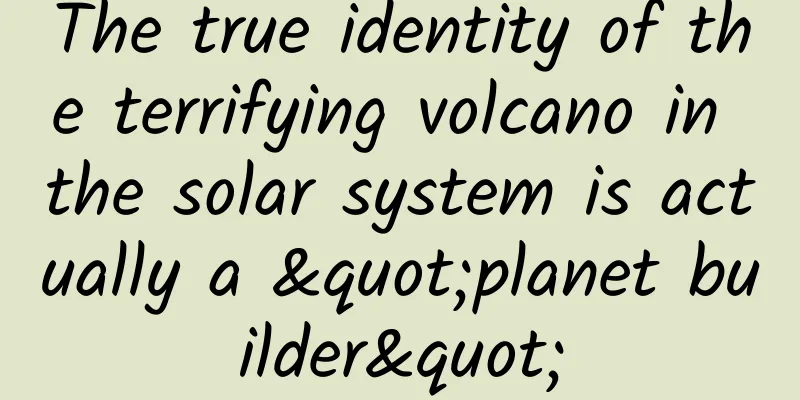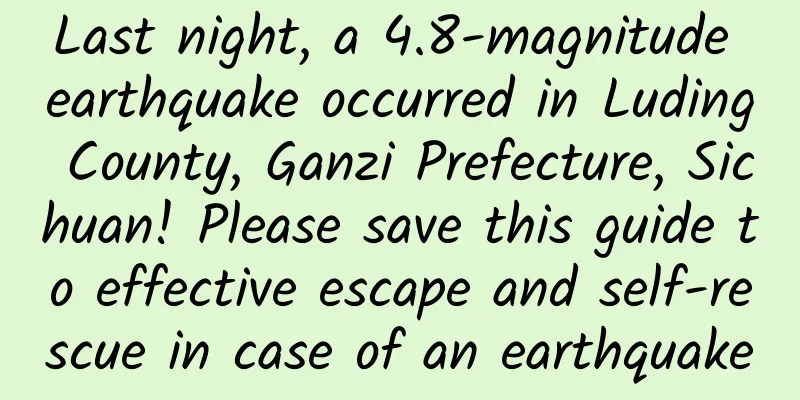Life in space has many restrictions. How should astronauts maintain their mental health?

|
On August 13, 2021, Russia's TASS news agency released a bombshell, accusing American astronaut Serena Onon Chancellor of being responsible for the air leak on the Russian Soyuz MS-09 spacecraft that docked with the International Space Station in 2018. The United States refused to admit this. This incident also aroused people's attention to the mental health of astronauts. Space station mystery On August 29, 2018, ground staff discovered signs of air leakage in the International Space Station. At first, they suspected that meteor fragments had penetrated the space station's bulkhead. The next day, after a full inspection of the space station, the cause of the leak was locked in the orbital module of the Russian Soyuz MS-09 spacecraft. The astronauts found a circular hole with a diameter of about 2 mm on the bulkhead. They used epoxy resin and tape for emergency repairs. However, the small hole had obvious signs of artificial drilling - who on earth did such a "harmful" thing? The small hole that caused the Soyuz MS-09 spacecraft to leak Small holes repaired with epoxy resin The US and Russian space agencies launched a comprehensive investigation. The US insisted that the leak was caused by human error during the ground manufacturing phase of the Russian spacecraft. However, the Russian side said that after an extravehicular spacewalk, it was shown that the hole of unknown origin was drilled "from the inside out" after the launch of the spacecraft, thus ruling out the possibility of drilling during the ground manufacturing phase. On December 11, 2018, Russian astronaut Kononenko walked in space outside the Soyuz MS-09 spacecraft to check whether the spacecraft's exterior was damaged by a small hole. On August 13, 2021, nearly three years after the incident, according to the Russian TASS news agency, the Russian space agency finally locked in the culprit and filed charges against American female astronaut Serena Onon Chancellor, alleging that she was the suspect in the MS-09 spacecraft drilling incident. Chancellor suffered a mental disorder due to a cervical vein thrombosis while in orbit, so she secretly destroyed the Russian spacecraft in an attempt to trigger the emergency evacuation procedure of the International Space Station in order to return to Earth early. The report further pointed out that the astronauts found a total of 8 drilling marks in the orbital module of the Soyuz MS-09 spacecraft, only one of which was drilled through. These holes were drilled in the thickest part of the outer wall of the orbital module, and it was obvious that the driller was not familiar with the design structure of the Soyuz spacecraft. All Russian astronauts who experienced this incident passed the polygraph investigation, but the United States rejected Russia's request to conduct a polygraph investigation on American astronauts. Mental health of astronauts As we all know, becoming an astronaut requires extremely rigorous physical training to adapt to the extreme acceleration during launch and return and the weightless environment in orbit. But at the same time, the mental health of astronauts cannot be ignored. Maintaining the mental health of astronauts is crucial to ensuring the normal progress of space missions. Life in space is very different from life on the ground. First of all, there are space limitations. Astronauts live in a closed, small, single spacecraft for a long time. At the same time, various equipment in the spacecraft continuously emits various noises, which will cause huge psychological challenges to astronauts. If there is no intervention, astronauts may even have claustrophobia, sleep disorders, anxiety, depression and other psychological problems. Secondly, there are social limitations. During the flight mission that lasts for several months, astronauts only interact with a handful of colleagues every day, which makes it easy for them to have negative emotions and difficult to relieve them. In July 2009, a total of 13 astronauts lived in the International Space Station. This is a group photo of nine of them having a meal. The small space is very cramped. In the early days of manned space flight, due to lack of data and experience, the psychological problems of astronauts were not fully considered. Since the Soviet Union launched the first space station, Salyut 1, in 1971, there have been many cases of indifference and tension between astronauts. In 1985, Vladimir Vasyutin, the commander of the Soyuz T-14 mission of the Salyut 7 space station, suffered from severe depression while in orbit and had to terminate the mission early and return to Earth. This was the first time that such a serious psychological crisis occurred in the manned space industry, which sounded the alarm for the selection and training of astronauts in other countries. In many space missions conducted by the Soviet Union/Russia and the United States with astronauts of different nationalities, due to various factors such as cultural background and native language differences, these astronauts from different places even developed mutually hostile and repressive relationships, making it difficult for them to cooperate in completing their missions. Such disagreements between astronauts often extend to communication with the ground, and astronauts even vent their anger on ground staff and find it difficult to obey commands. In several missions of the US space shuttle docking with the Russian Mir space station, there were many tensions between the crew and the experts in the control center. The mission duration of the conventional International Space Station and the Chinese Space Station is 180 days (6 months), which is in line with the psychological endurance of the trained astronauts. From 1994 to 1995, Russian astronaut Valery Polyakov set a world record of 437 consecutive days (14 months) in orbit on the Mir space station. He was in good mental condition during his time in orbit, which preliminarily proved that astronauts can maintain emotional stability during long-term space flights after training, which also provides strong feasibility support for the later long-term manned Mars exploration mission. Generally speaking, psychological problems of astronauts can be trained and intervened in three stages: ground training stage, on-orbit operation stage and rehabilitation stage after the mission. Russian astronaut Polyakov in the Mir space station, photographed by the space shuttle Discovery on February 6, 1995 Ground training phase During the astronaut selection stage, mental health accounts for a large proportion. Various professional tests can be performed to select astronauts with strong psychological endurance. Astronauts who meet the requirements generally need to have extraordinary emotional stability, a positive attitude, a high degree of self-confidence, super stress handling ability, strong adaptability, independent and objective decision-making ability, and normal interpersonal communication skills. These qualities are of great benefit to astronauts when they face overloaded physical and mental tests, perform various complex tasks, handle interpersonal relationships during tasks, and even encounter sudden dangers in space. After extremely rigorous psychological and physiological screening, the selected astronauts are rare. After that, further targeted training will be carried out. The psychological training of our astronauts includes two types: professional psychological training and combined psychological training. In professional psychological training, the main purpose is to enhance the emotional management ability of astronauts through professional psychological training to help astronauts relieve the tension, irritability and fear during the mission. Yang Liwei, my country's first astronaut, faced the test of life and death alone during the launch, but his highest heart rate was only about 100 beats/minute, and he could still sleep peacefully in a short 21-hour mission. Combined psychological training is more diverse, and is generally combined with parachuting, overweight training, weightless flight, field survival and other training to examine the psychological changes of astronauts during the mission and make specific training. From May 9 to 27, 2018, the first field survival training for astronauts organized in the desert area of the landing site in my country was carried out in the Badain Jaran Desert. During the 19-day training, in addition to mastering the ability to survive in the desert environment, the 15 astronauts also received psychological counselors to examine their thinking and problem-solving abilities in terms of the type of survival equipment each astronaut chooses, the time required to make decisions, and unity and cooperation among team members. Russian astronauts conduct field survival training in Baikonur in 2019 It is worth mentioning that on June 17, 2021, the day when the Shenzhou XII spacecraft was launched, the three astronauts got up in the early morning and successfully docked with the Tianhe core module in the evening of the same day, without resting for a total of 19 hours. Not sleeping for 19 hours may be exhausting for ordinary people, but the astronauts still completed all the established tasks perfectly and reliably. According to astronaut Tang Hongbo, my country has organized a 72-hour sleep deprivation experiment in a small space-in a small space, astronauts are restricted from sleeping for three days and three nights, and they need to perform some judgment tasks while keeping their heads clear. In the second half of the experiment, it is no longer important whether the body is sleepy or not. It is more about the strong heart that supports the astronauts to continue to persevere. This seemingly cruel experiment has constructive significance for preparing for a rainy day. If an emergency suddenly occurs in the spacecraft, astronauts face severe tests such as lack of power and hypoxia. It is very important to maintain a calm judgment ability to ensure the safety of astronauts. Chinese astronauts studying in class During the ground training phase, we will try to find the personality characteristics of each astronaut, analyze and match astronauts with different personalities, and strive to make the personality match between the astronaut combinations for each mission, which will help maintain the emotional stability of astronauts while in orbit and enhance the mission cooperation ability of the astronaut crew - even just a glance can understand each other. This can avoid astronaut crews with potential communication conflicts from performing missions. On March 30, 2018, three years before the launch of my country's Tianhe core module, astronauts had already carried out comprehensive space station mission training. The crews of Shenzhou XII to XV spacecraft during the construction phase of the space station had been scientifically demonstrated at the time, and the optimal astronaut crew matching plan had been determined. Chinese astronauts in ground simulation training On-orbit operation phase The best way to relax in space is to look out the porthole - overlooking the vibrant home planet Earth, and experiencing the shock and magnificence that cannot be felt on the ground. The International Space Station has a dome cabin that is 1.5 meters high and 2.95 meters in diameter. It has a total of 7 large skylights, of which the central circular window has a diameter of 80 centimeters. In addition to being able to directly observe the robotic arm for astronauts to operate, the dome cabin is also a unique observation deck for the earth. The portholes on the spacecraft are necessary. Astronauts can enjoy the white clouds floating under their feet, look forward to flying over their homeland and hometown, and even clearly observe the fleeting lightning in the clouds at night. Astronauts photographed the Earth's topography in the dome cabin in March 2011 Ensuring that astronauts have enough private space in space helps them maintain their physical and mental health. my country's space station core module is designed with three independent bedrooms in the small column section. Each bedroom is sufficiently airtight, providing astronauts with a relatively quiet resting environment and a private space. Astronauts can use family photos, dolls and other items to decorate their bedrooms to make them more cozy. Each bedroom also has a small porthole, accompanied by the starry sky, flying over the mountains and blue sea, sleeping in the space station can also be extremely romantic. Real view of the independent bedroom of astronauts in the Chinese space station Combining work and rest is a recognized way to improve work efficiency and relax the body and mind, and the same is true in space. The astronauts of the International Space Station and the Chinese Space Station have basically the same working hours as the ground staff. After a busy day of work, the astronauts can listen to music, exercise, and watch videos in space. With the development of network technology, astronauts can now make video calls with their families in space. NASA astronaut Scott Kelly said that even in a space station far away from the earth, he would make time for some interesting activities, including watching the TV series "Game of Thrones." European Space Agency astronaut Frank de Winn trains on a treadmill aboard the International Space Station In order to ease the homesickness of astronauts during long missions, my country's space station has specially created a 3D picture of each astronaut's home, so that astronauts can "return" to their most intimate home through VR technology. In addition, in order to prevent the long-term "isolated" life in orbit from making astronauts out of touch with society, my country's astronauts also watch the live broadcast of the "News Broadcast" every day to learn about major events happening on the ground. Ground staff will also continue to pay attention to changes in the astronauts' psychological state and provide guidance. In February 1987, Soviet astronaut Romanenko boarded the Soyuz-TM2 spacecraft to enter the Mir space station, with a planned mission duration of one year, hoping to break the record for the length of time humans have lived in space. However, Romanenko became increasingly tired and his energy gradually withered, but the ground command center did not let him return to the ground. Instead, it gradually shortened his working hours from the original 8.5 hours a day to 4.5 hours a day, allowing him to set a world record of 326 days of living in space. Although this record was later broken, Romanenko provided valuable psychological data for the intervention of astronauts' psychological state in orbit. In order to prevent astronauts from experiencing uncontrollable psychological problems in space, the International Space Station has even prepared emergency drugs such as tranquilizers and antidepressants. NASA stipulates that if an astronaut has dangerous behavior such as maliciously destroying a spacecraft during a mission, other astronauts can use violence to subdue him or her and force him or her to inject tranquilizers. It is better to be prepared than to be caught unprepared. Fortunately, no astronaut has been forced to inject tranquilizers so far. Return to rehabilitation After the space mission is completed and the astronauts return safely to Earth, they cannot immediately relax and rest. After returning to Earth, the astronauts who successfully landed on the moon during the Apollo mission were affected to varying degrees by the sudden huge fame and the extrasensory psychological impact brought by the moon landing. After successfully landing on the moon, Armstrong once expressed his feelings, "How long will it take before people stop treating me as an astronaut?" After returning from Apollo 14, astronaut Edgar Mitchell focused on parapsychology and founded the "Society for the Study of the Noetic Sciences" to study supernatural phenomena; after returning from Apollo 15, astronaut James Irwin founded a religious organization called "High Flying". Since 1973, he has led teams to Mount Ararat in Turkey several times to search for the wreckage of "Noah's Ark". The Apollo 11 astronauts received a very warm welcome upon their return to Earth. The above are several typical examples of incomplete psychological rehabilitation of astronauts after the completion of space missions. Astronauts will feel uncomfortable after returning to the ground because they live in a closed environment for a long time in space. Ground psychological staff will guide astronauts to connect with society and help astronauts quickly recover to a healthy psychological state. This plays a key role in astronauts' rapid integration into society and carrying out the next mission. Yang Liwei, my country's first astronaut, is still undergoing the same training as other astronauts today, always keeping in good shape to prepare for the country's expedition. As an intersection of aerospace engineering and psychology, psychological guidance and intervention for astronauts is still an important research topic of the astronaut system. The journey of mankind leaving the earth, setting foot on Mars and even flying out of the solar system is long, and we need strong warriors who can endure loneliness and solitude to explore the unknown tomorrow for mankind. |
<<: Eating lotus root in spring is definitely not ugly! How to choose and eat it is quite particular
>>: Is it possible to transform a cemetery into a solar power plant? | Environmental Speaker
Recommend
In 2021, how can small and medium-sized enterprises seize the traffic of Bilibili?
In recent years, from the marketing of WeChat pub...
Yuting 2021 clothing live broadcast operation implementation course
The course comes from Yuting’s 2021 clothing live...
"Unique" bird fossils fill the 70 million-year gap in bird brain evolution|Expo Daily
Could Black Swans Become an Invasive Species in m...
The "Content Planning Training Camp" produced by Dangxing Academy is priced at 9999 yuan on the official website
The "Content Planning Training Camp" pr...
30 high-quality information flow cases from 18 industries, check them out all at once!
This article shares with you 30 high-quality case...
Zero profit on hardware: Customized mobile phones enter a new era
Whether operators say "free phone purchase&q...
The Gregorian calendar year 2024 is 12 days longer than the lunar calendar year of Jiachen. Why?
The Gregorian calendar year 2024 is a leap year, ...
A lone brave man in the deep mountains and valleys - The Ancient Tea-Horse Road
A lone brave man in the deep mountains and valley...
A complete guide to the 2019 Tik Tok promotion plan, everything you want to know is here!
While TikTok is reaping the benefits, everyone wa...
It is difficult to promote new products. How to open up the market by leveraging well-known brands?
For enterprises, innovation is not an easy thing,...
How to build an IP brand in the protracted fight against the epidemic?
First of all, we must be prepared to coexist with...
Interior design construction process video tutorial
What you lack is not superficial knowledge, but a...
How to plan a hit event?
With the fading of traffic dividends in recent ye...
Android apk anti-decompilation technology Part 1 - Packing technology
I have been working on Android framework for near...
Marketing must-read: Limited-time flash sales operation and influencing factors
Limited-time flash sales are a marketing applicat...









